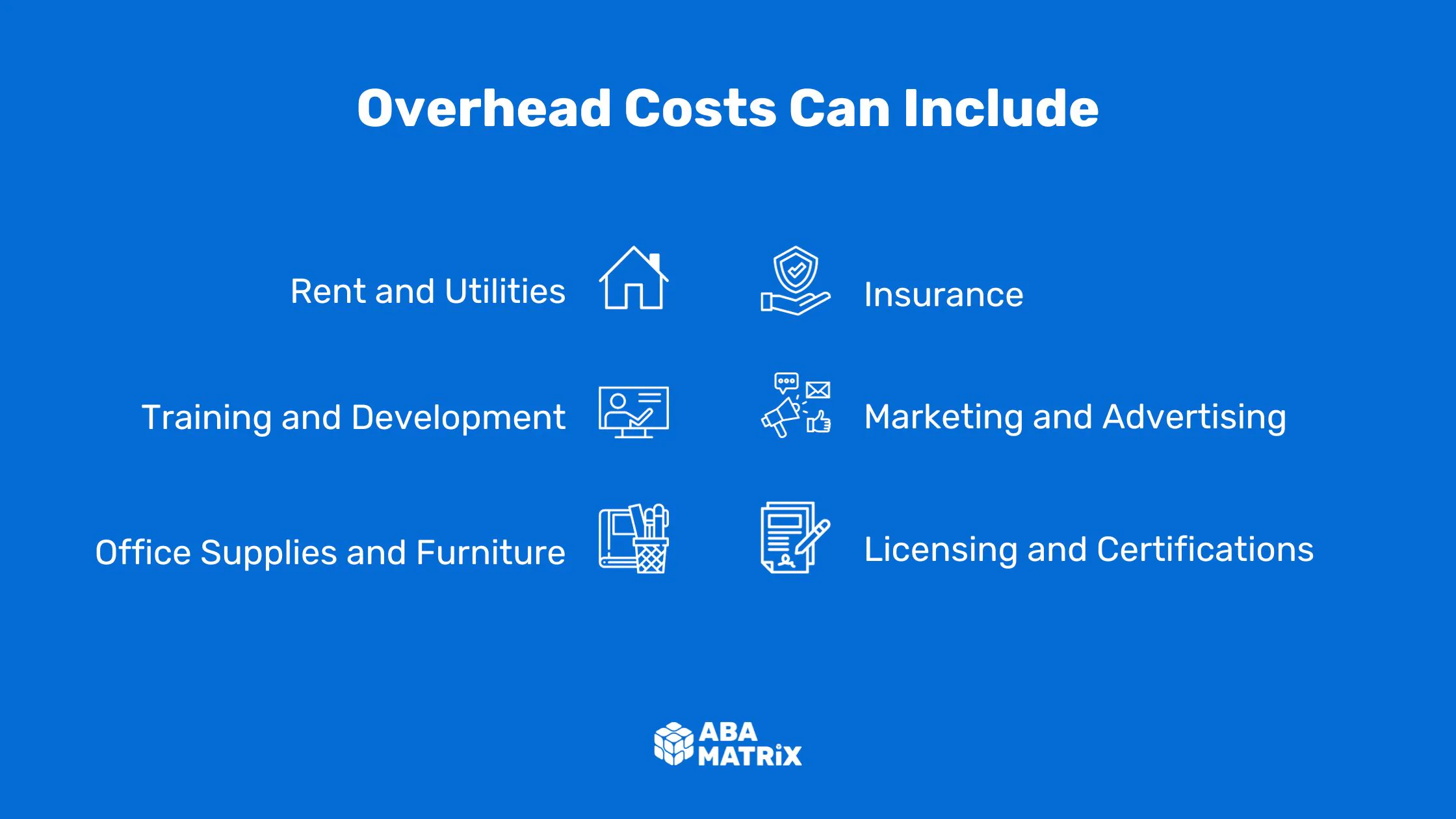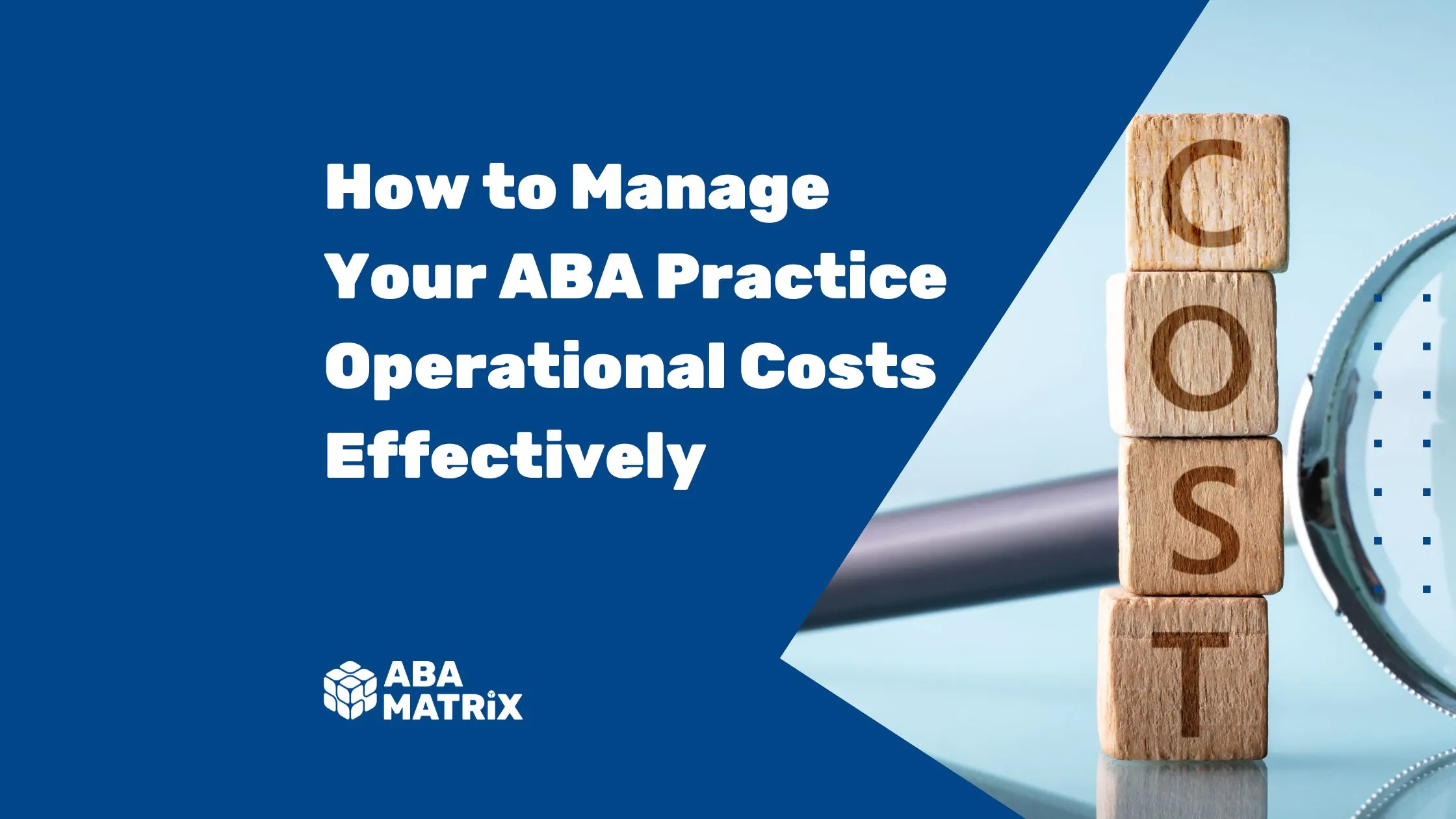Launching and managing a sustainable ABA therapy practice efficiently can be a fulfilling experience that allows you to positively impact people’s lives. This endeavor offers numerous benefits, including setting your own schedule and fees, selecting your patients, and choosing your office location. However, you must navigate the complex financial landscape of operational costs to ensure the success of your ABA therapy practice. From overhead expenses to equipment costs, budgeting, and resource allocation, understanding your financials is critical to running a sustainable practice. In this article, we explore the intricacies of operational costs within the ABA therapy field and provide practical guidance for effective cost management.
Operational costs encompass the array of expenses required to keep your ABA therapy practice running smoothly. These costs extend beyond the essential clinical services and encompass various elements that contribute to the overall operation of the clinic.
Key areas of operational costs
1. Overhead Costs
Overhead costs are the fixed expenses necessary to maintain the clinic’s infrastructure and daily operations. According to Investopedia, overhead “is any expense incurred to support the business while not being directly related to a specific product or service.” These may include rent, utilities, insurance, administrative salaries, and software subscriptions.
Anay Quintero, owner of Blue Care Behavior Therapy, an ABA clinic in Florida, emphasizes: “Overhead costs –especially liability insurance and credentialing–, are among the most substantial financial challenges when starting an ABA practice.” Prudent management of these expenses is essential for maintaining financial health.

2. Payroll Expenses
These costs are associated with compensating the professionals and staff who provide ABA therapy services or who support your practice’s operations, such as analysts, RBTs, administrative assistants, receptionists, or office managers. In addition, payroll expenses encompass more than just wages. Employers are responsible for various payroll-related costs, including payroll taxes (such as Social Security and Medicare taxes) and employee benefits (e.g., health insurance, retirement contributions, and paid time off).
3. Equipment Expenses
ABA therapy practices often require specialized equipment to provide effective interventions. These expenses can include assessment tools, communication devices, sensory equipment, and technology for data collection, graphing, and documentation processes. Investing in the right equipment is crucial for delivering high-quality care, but it’s equally important to manage these expenses to avoid overstretching the budget.
Tips for Cost-Effective Operational Management
Effectively managing operational costs in your ABA therapy practice requires a strategic approach that balances quality care with fiscal responsibility. Here are some actionable tips to optimize your operational expenses:
1. Streamline Overhead Expenses
Carefully evaluate your overhead costs and seek opportunities to optimize them. Consider whether certain administrative tasks can be managed in-house rather than outsourced, as Anay Quintero suggests. “Explore different insurance options and research state-specific requirements to ensure you’re not overspending on unnecessary coverage,” she explains. Quintero also points out that “for those offering only in-home services, there is no need to rent an office or clinic, and starting from home can save money on rent, utilities, office supplies, and equipment.” A clinical setting, however, lets you treat more patients and offer options like group therapy.
2. Implement Robust Budgeting
Create a comprehensive budget that encompasses all operational expenses. Divide your budget into categories such as personnel, rent, utilities, equipment, and marketing. Regularly review your budget to track actual spending against projected costs, making adjustments as needed.
3. Use your resources effectively
To ensure efficient task allocation, it’s important to determine the necessary resources for each task and oversee personnel, manage fees and pay rates. Using platforms like ABA Matrix can simplify these tasks and ultimately reduce administrative work while improving operational efficiency.
Get Customized Solutions with ABA Matrix
A dynamic platform with features like data collection, reporting, graphing, compliance alerts, billing, and payroll that will help you simplify operations and costs.
4. Embrace Technology for Efficiency
Incorporate technology to streamline processes and enhance efficiency. Consider adopting practice management software, like ABA Matrix, that offers tools for data collection, graphing, billing, and scheduling. ABA Matrix, for instance, provides a digital platform that helps practitioners make compliance billing, client scheduling, and general management tasks a seamless experience, contributing to cost-effective operations.
5. Monitor Financial Performance
Regularly monitor your clinic’s financial performance through financial reports and key performance indicators (KPIs). Analyze trends, identify areas of improvement, and make informed decisions based on data-driven insights. As a solution, ABA Matrix provides comprehensive financial planning tools like billing, payroll, and financial reports that enable you to project costs, allocate resources, and optimize financial stability.
To ensure the long-term success and growth of your behavioral health business, it’s crucial to recognize and address the factors that contribute to cost-effective management. By mastering and knowing how to manage overhead costs, equipment expenses, budgeting, and resource allocation, you can launch and manage a financially sustainable ABA therapy practice.
